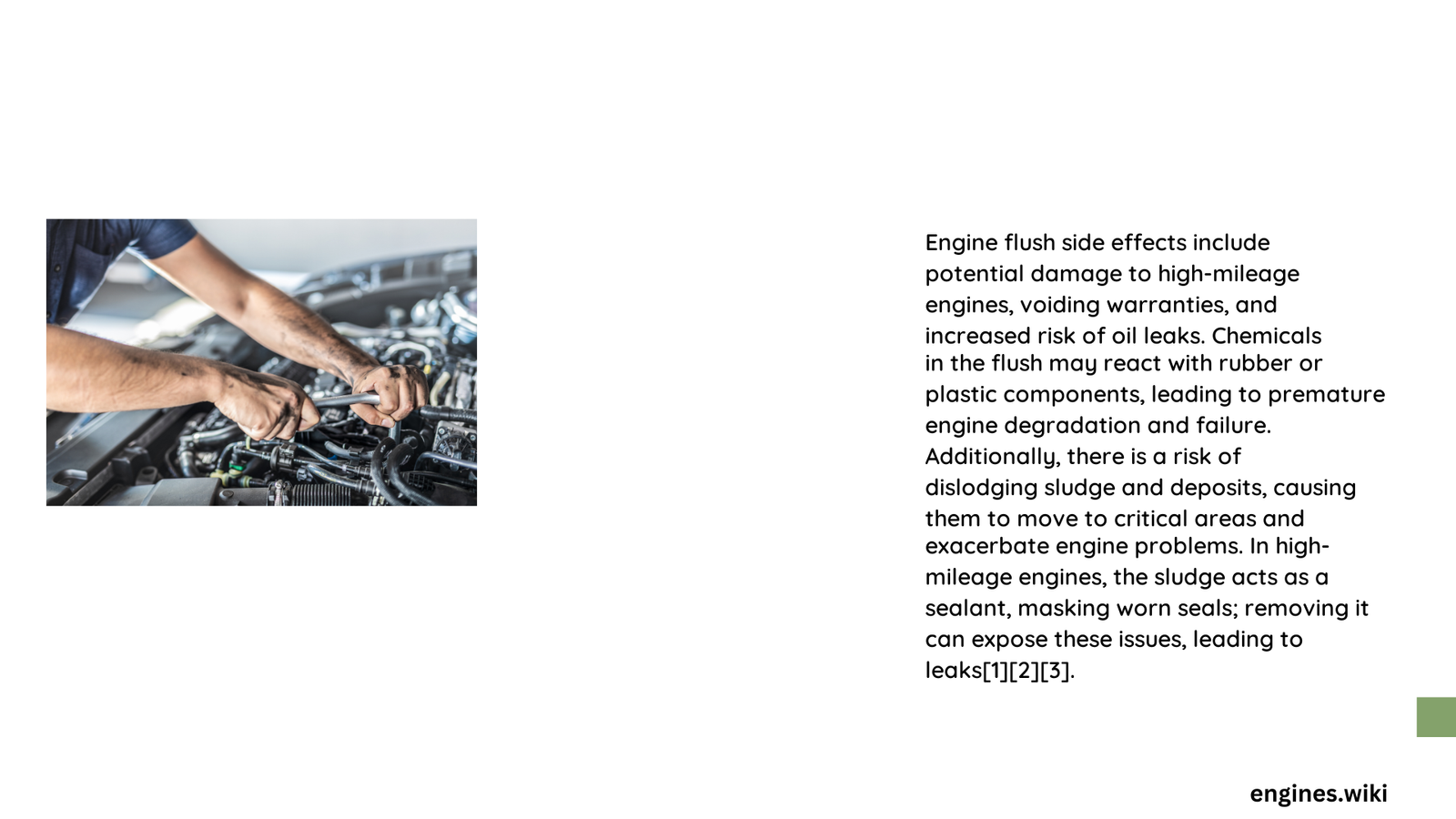Engine flush procedures can introduce significant risks to your vehicle’s internal systems, potentially causing unexpected mechanical complications. These side effects range from minor performance disruptions to severe engine damage, impacting oil circulation, seal integrity, and overall mechanical functionality. Vehicle owners must understand the nuanced implications before implementing an engine flush procedure.
What Are the Primary Engine Flush Side Effects?
Can Engine Flushes Cause Mechanical Damage?
Engine flushes can potentially trigger several mechanical complications:
- Seal Degradation: Harsh chemical interactions might compromise rubber and plastic engine seals
- Deposit Dislodgement: Potential movement of accumulated sludge into critical engine components
- Oil Passage Blockage: Risk of creating new obstructions in lubrication channels
How Do Chemical Interactions Impact Engine Performance?
| Effect | Potential Consequence | Severity |
|---|---|---|
| Oil Viscosity Alteration | Reduced Lubrication Efficiency | Medium |
| Additive Breakdown | Compromised Protective Mechanisms | High |
| Contaminant Redistribution | Increased Internal Wear | High |
What Symptoms Indicate Negative Engine Flush Reactions?
Recognizing adverse reactions is crucial for preventing long-term damage:
- Unusual Engine Noise
- Knocking sounds
- Increased mechanical friction indicators
-
Unexpected rhythmic vibrations
-
Performance Degradation
- Reduced acceleration responsiveness
- Inconsistent power delivery
- Increased fuel consumption
Are High-Mileage Vehicles More Vulnerable?
Older vehicles present unique challenges during engine flush procedures:
- Existing seal deterioration increases leak probability
- Accumulated deposits might be maintaining structural integrity
- Higher risk of catastrophic mechanical failure
What Professional Mechanics Recommend
Automotive experts suggest:
- Conduct thorough vehicle diagnostic assessment
- Use manufacturer-approved cleaning solutions
- Consider professional implementation
- Monitor vehicle performance post-procedure
Technical Considerations for Safe Engine Flush
Critical factors to evaluate before performing an engine flush:
- Current vehicle mileage
- Maintenance history
- Engine condition
- Manufacturer recommendations
Preventative Maintenance Alternatives
Instead of traditional engine flush, consider:
- Regular oil changes
- High-quality synthetic oils
- Periodic professional engine inspections
- Proactive maintenance schedules
Conclusion

Understanding engine flush side effects requires comprehensive knowledge of automotive mechanics. While potential benefits exist, risks demand careful consideration and professional guidance.
